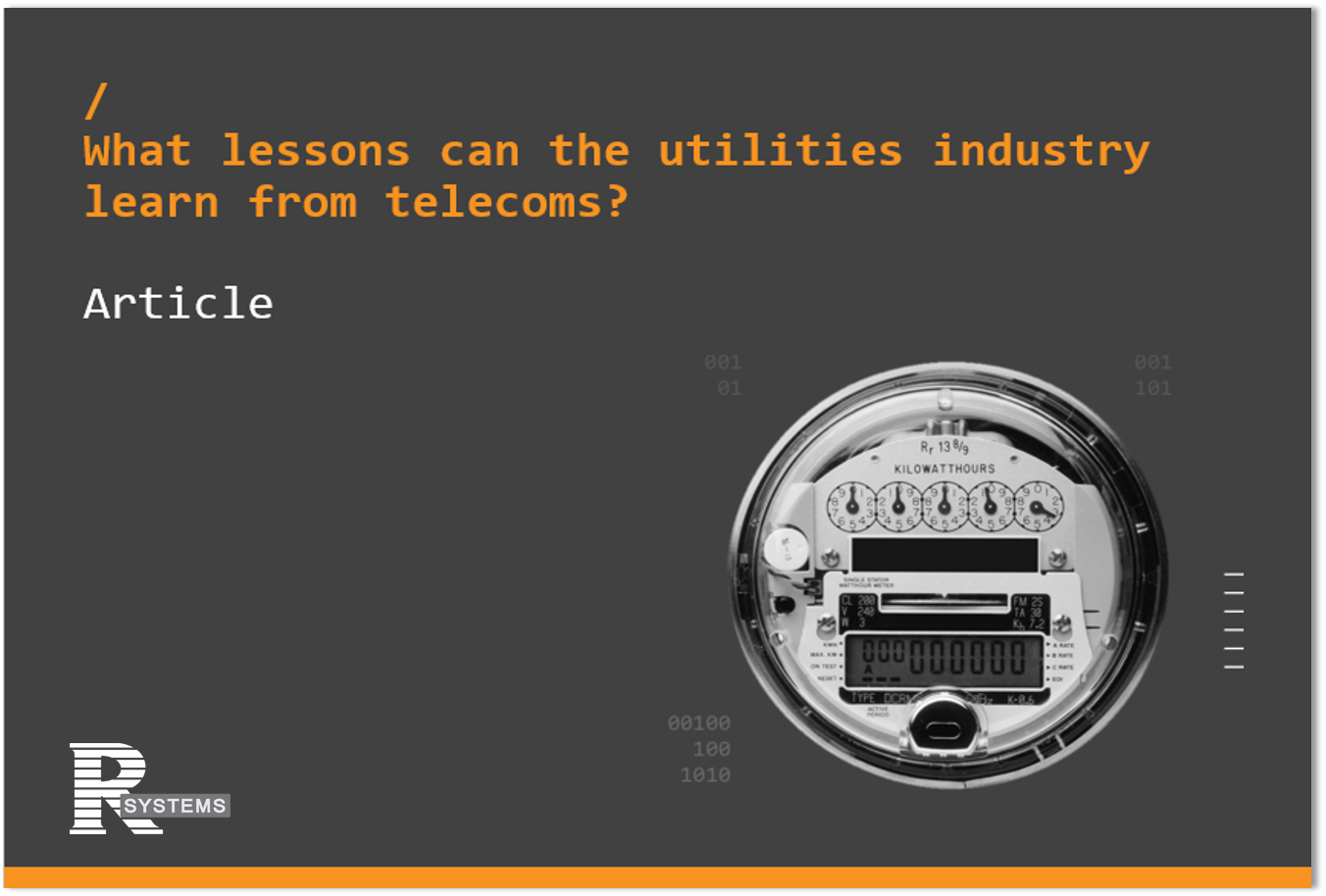This article is a continuation of the discussion opened here, looking further into the lessons that the utilities industry can learn from telecoms in terms of:
- Power to the people: Compared to telecoms, the utility industry might seem archaic. In telecoms, most mobile subscribers have pre or postpaid plans that are based on pay-per-minute or per megabyte. Yet, most households have monthly or quarterly gas, water and electricity meter readings. This invariable leads to more instances of bill shock than in telecoms – not to mention energy inefficiency and the cost of maintaining customer service departments to handle irate consumers.
- IoT: An opportunity – or a challenge? The utility industry has been witnessing a revolution of sorts thanks to the Internet of Things (IoT). IoT, which connects previously ‘mute’ objects to the internet, empowers consumers to be in control of the utilities they use. Yes, they can heat their homes, switch on their lights and fill their bath tubs remotely with a few clicks from a device. More importantly, it also allows consumers to monitor and manage the amount of the earth’s resources they use.
Gartner estimated that in 2015 nearly 300 million IoT units in the utilities sector delivered energy efficiency, automatic billing and monitoring[1]. The days of “estimated” meter readings could soon be a thing of the past. Yet, herein lies both the solution and the challenge for the utilities sector. Can the industry harness the powers of IoT and new technology to herald a new era in utilities?
The data from smart meters can help utility companies transform themselves. One industry that generates considerable amounts of data is telecommunications. Faced with an aggressive marketplace, telecoms operators have had to adapt and innovate to secure new revenue streams. What lessons can be derived from telecoms?
- Mediation: Mobile operators use robust mediation solutions to manage and monitor multiple devices that are online 24/7/365. With the advent of IoT, utility companies will similarly have intelligent – smart – meters and multiple “always connected” devices. Telecoms mediation solutions can effectively integrate and manage these devices for utility companies for smarter billing.
- Seamless online billing: Mobile operators have deployed real-time Online Charging Systems (OCS) to make it easy for subscribers to pay their bills. Prepaid vouchers can be purchased over the counter and credit can be added almost instantaneously. Utility companies should look to introduce such schemes that can add energy or water credit. The technology available in telecoms can be adapted to match specific serial numbers to smart meters for seamless ‘topping up’. This could be an effective solution for utility companies who have to extend their grids to areas where post-paid billing is not an option.
- Access to energy: Mobile operators have invested in infrastructure to deliver the best possible service to their subscribers. Better the access to the network, the more likely for a subscriber to spend on voice and data. Put simply, that’s more revenues for the operator. Similarly, utility companies must have the infrastructure and systems in place to provide seamless access to the service they deliver to consumers. Without continuous and consistent access to a utility, even the best tariff plan is just an empty and hollow slogan. Customers need to have a product to buy. Smart metering will help to deliver the utility with a much needed cost control feature to empower consumers and build trust.
- Forge partnerships: To offer subscribers convenience – and to secure new revenue streams – mobile operators have forged innovative partnerships. In Poland, T-Mobile and energy provider Tauron offers a package of discounted phone services and power rates[2]. Smart metering based on M2M (Machine to Machine) technology from Orange Polska and AquaRD is effectively distributing and managing the water supply for a town in Poland[3]. Forming strategic partnerships with telecoms operators is a win-win. It strengthens the proposition for both companies and allows both organizations to maximize the IoT potential.
- New business models: Some companies in the mobile industry have launched Mobile Virtual Network Operators (MVNOs). That is when a company sells mobile phone services by making use of another telco’s existing network infrastructure. As telcos look to collaborate, utility-based MVNOs may not be a far-fetched idea. The technology being utilized within the telecommunications industry to manage subscriber databases, the HLR (Home Location Register), can also be used by utility companies.
Telecom operators have made inroads to analyze subscriber data and subscribers have seen the benefits. Carriers have the ability to optimize routes in real time, identify usage patterns and empower customer service assistants to change subscriber price plans. Similarly utility companies can deploy similar solutions to analyze customer usage and in turn help consumers save on consumption.
Analyzed effectively, utility companies can use this intelligence to build consumer trust, deliver smarter, sustainable services and boost revenues. It makes commercial sense.
[1] Gartner, 30 April 2015, [2] Reuters France, 19 December 2013, [3] Orange, 15 September 2015
To read the full article in .pdf format, please click here.
